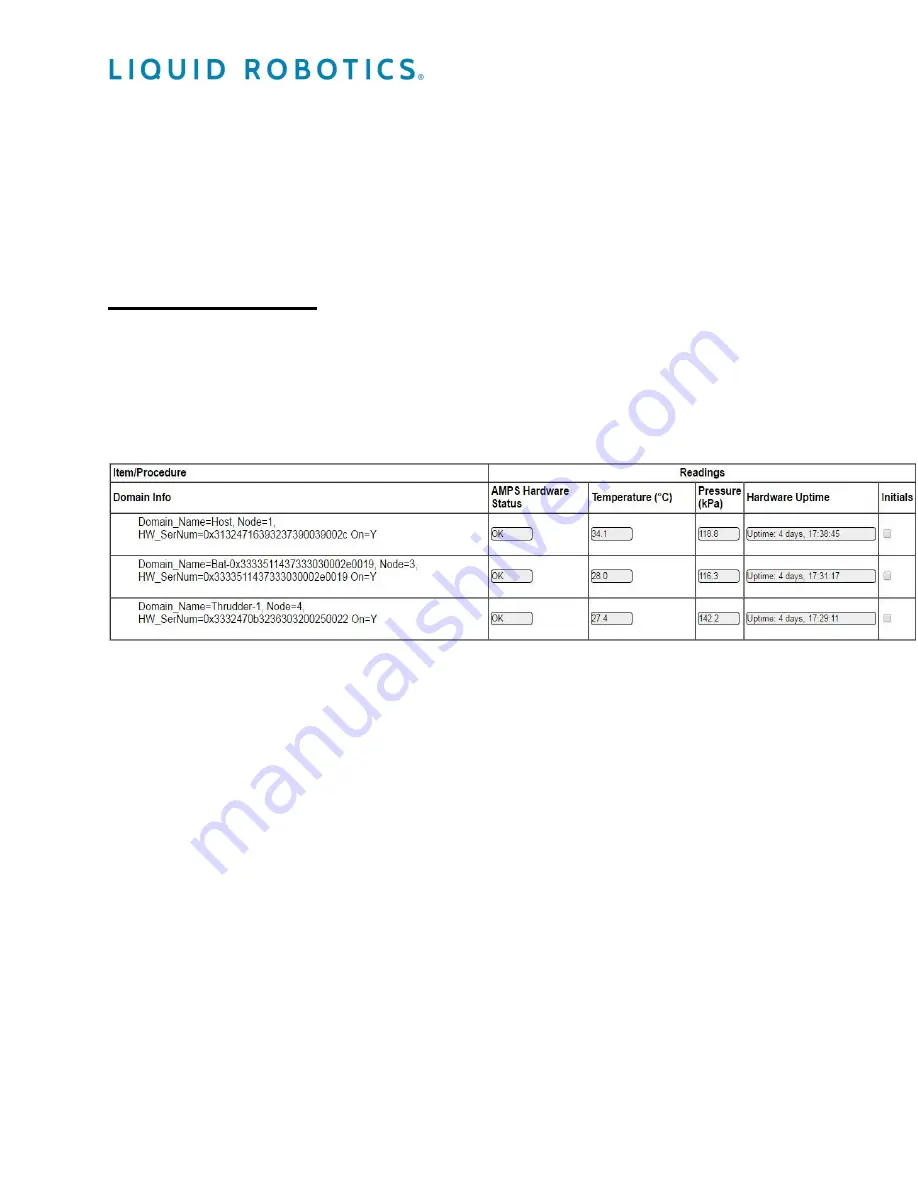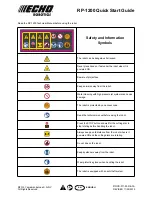
Customer Training Guide
Pre-Launch Wave Glider® SV3
08033 Rev A
11
A good test is to compare the three panels against each other. All three should be giving similar
power status readings. Another test that is recommended is to completely cover/uncover each
panel. Take readings on each panel while covered/uncovered. AMPS may take a few minutes
for values to update.
AMPS Domains:
Auto filled
Domains will autofill in the pre-launch checklist if they are turned on and operating correctly.
See example below. At a minimum, the Host (CCU) and the Thrudder domains must be
present. CCU and payload pressures should be between (130 kPa and 105 kPa absolute) at
standard temperature and pressure (STP). Oil filled Thrudder pressure should be between 200
kPa and 170 kPa (absolute)
at STP.
Adaptable Modular Power System (AMPS)
The Adaptable Modular Power System (AMPS) enables extremely efficient power management
for a wide range of possible Wave Glider configurations. By generating data on individual power
producers and power consumers in prioritized power domains, AMPS facilitates optimal mission
specific power management. AMPS is defined by a 3-wire power distribution system that
includes hierarchical communications capability for monitoring and control.
AMPS extensibility supports:
1. Scaling the number of power domains.
2. Scaling power generation inputs.
3. Scaling power storage capacity.
G1, G2, G3 - General Purpose Expansion Port Connectors
The G1, G2, and G3 General Purpose Expansion Port connections to the CCU support
AMPS power management logic and also provide Ethernet switching capability for flexible
payload-to-payload and payload-to-CCU communications management. They are designed to
support payloads with multiple sensors or devices that require communications channels with
other payloads and also with the CCU. This is in contrast to the S1, S2, S3, and S4 sensor
supply, with direct communications connections to the CCU.
















































